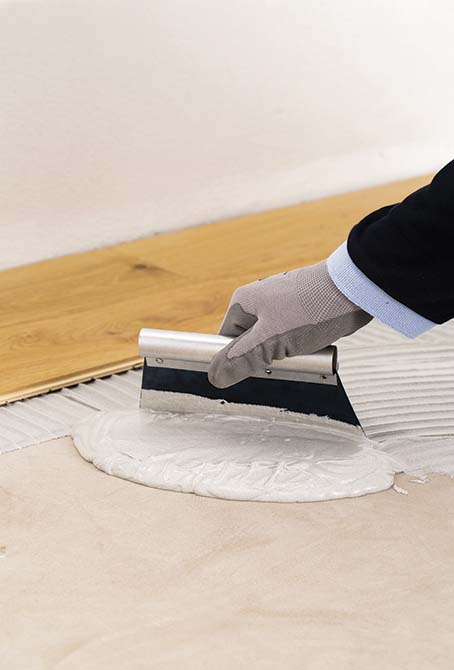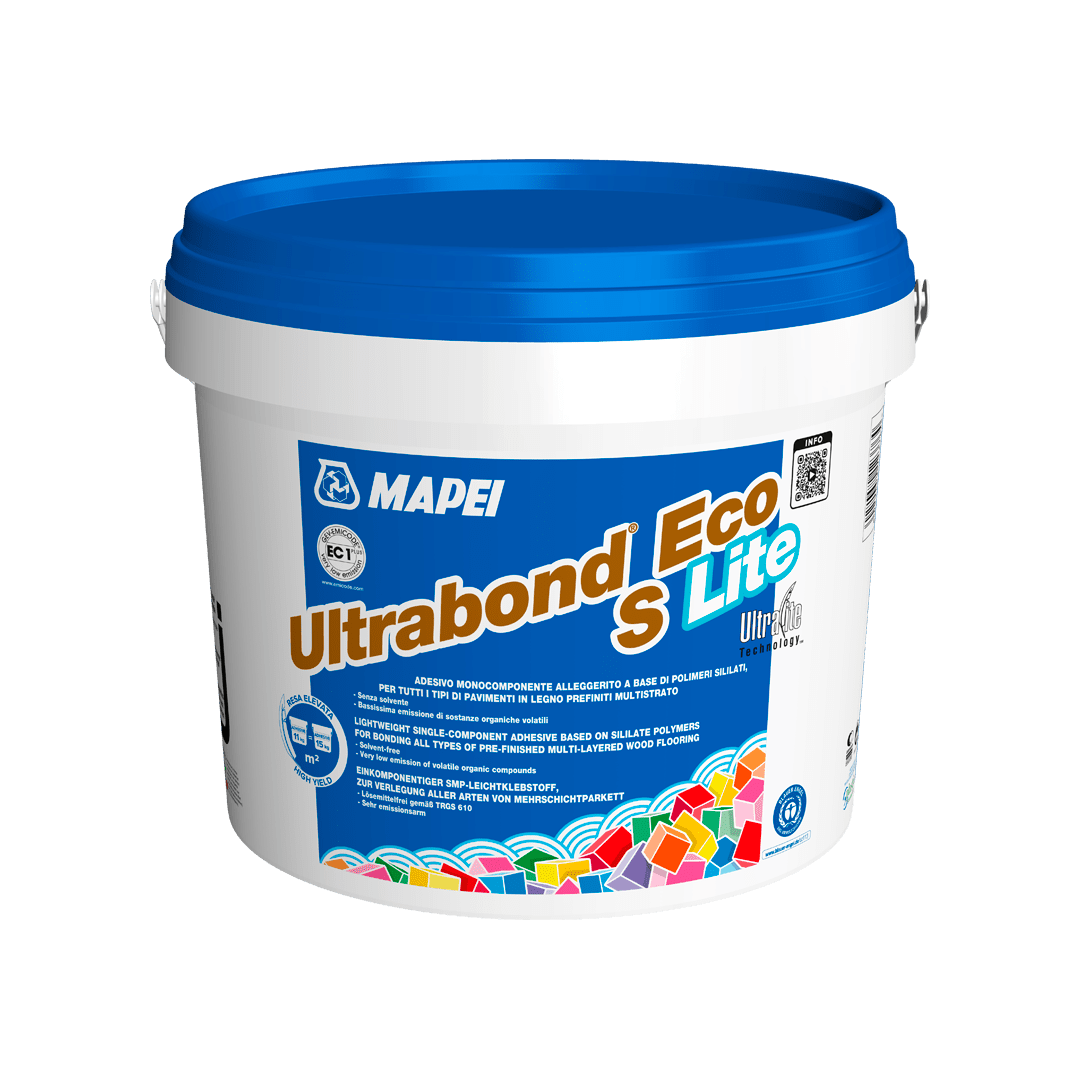
All the benefits of a lightweight adhesive to install wood flooring
Ultrabond Eco S Lite: high performance in the name of sustainability.
Natural wood adds a touch of elegance and style to any environment it is used in. Wood, however, will always remain a living material; it interacts with the setting in which it is placed and wooden flooring has its own particular requirements when it comes to installation: the correct level of residual moisture in the substrate, the flatness of the installation surface, acclimatising the wood before bonding it and choosing the right adhesive to bond it in place. But how do you make the right choice?
Which adhesives should you use to bond wooden flooring?
Adhesives that are tough with the capacity to maintain their hold on different types of building material (from concrete to gypsum, from absorbent surfaces to those with less absorbency), that contain no water so that the wood remains as stable as possible and within the limits specified by the reference standards and, depending on each site’s specific requirements, that have a degree of elasticity that allows them to absorb the natural movements of wood during its service life without yielding. Wooden flooring is bonded in place using one-component or two-component adhesives, or with one of the new generation of silylate-based adhesives.
Are lightweight adhesives available on the market for installing wooden flooring?
Nowadays, yes. Thanks to the advances made in the chemical industry, the Mapei Research & Development laboratories in Milan have been able to modify certain polyurethane resins and obtain a family of silylate-based adhesives. Which is how the lightweight, silylated polymer-based adhesive ULTRABOND ECO S LITE was developed. The recycled material contained in the adhesive is made up of hollow glass spheres.
What are the benefits of using this type of adhesive?
To put it briefly: the average weight of a drum of adhesive is lower (just 11 kg), resulting in lower costs and consumption, it is extremely easy to remove the adhesive from trowels and surfaces while still wet, it covers the back of the en elements extremely well (in technical terms, excellent rib stability), the consumption rate is around 30-40 % lower than with other adhesives from the same category, it contains high quality recyclable materials, which means it has a lower impact on the environment, it is certified as EMICODE EC1 PLUS (low emission of volatile organic compounds) and it is tough, elastic and perfectly compatible with products used to prepare and finish wooden flooring.
Can adhesives for wooden floors create problems between the joints in the flooring?
If the flooring has been installed correctly, no. If the flooring isn’t installed according to specification, on the other hand, such as part of the adhesive is allowed to seep into the joints in the wooden flooring, oils and varnishes normally used to finish off and protect the flooring would come into contact with the adhesive and, in certain cases, form aesthetic or technical defects. Even though there is no substitute for perfect installation, it is important to point out that ULTRABOND ECO S LITE lightweight adhesive is perfectly compatible with all the protection and varnishing systems from the Mapei ULTRACOAT Range.
And lastly, why Mapei?
Amongst the leading, if not the only, manufacturer of silylate-based lightweight adhesives, not only does Mapei manufacture and supply adhesives to install the flooring itself, the company also offers complete systems made up of products for substrates, waterproofing products, levelling mortars, adhesives and finishing products so that wooden flooring can be installed correctly and last a long time.







